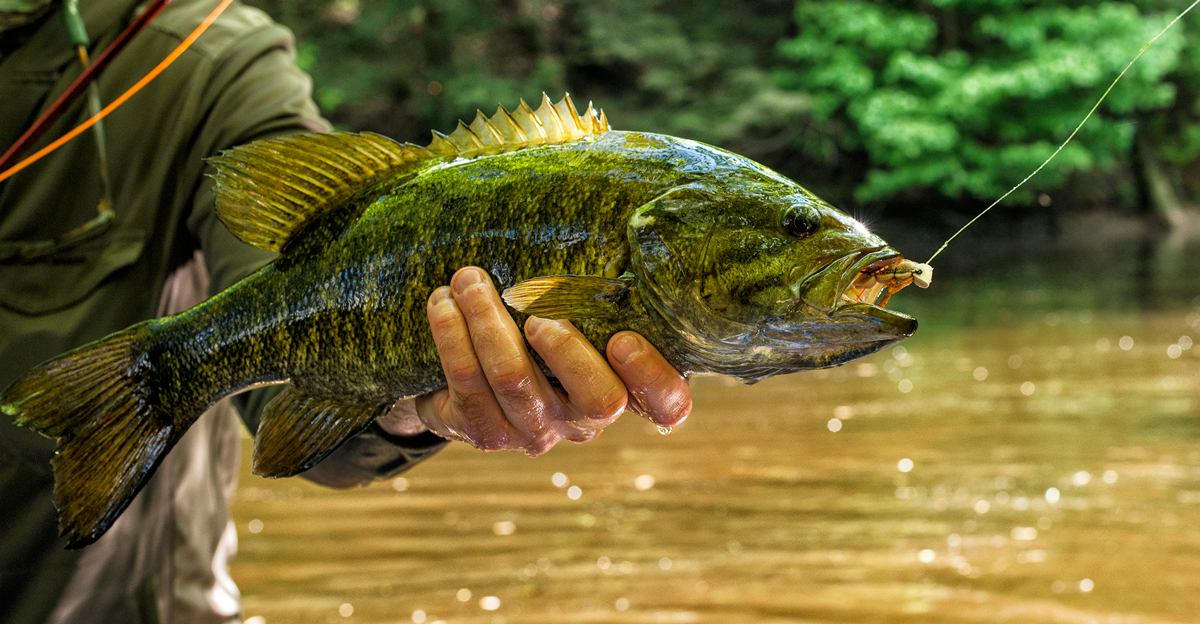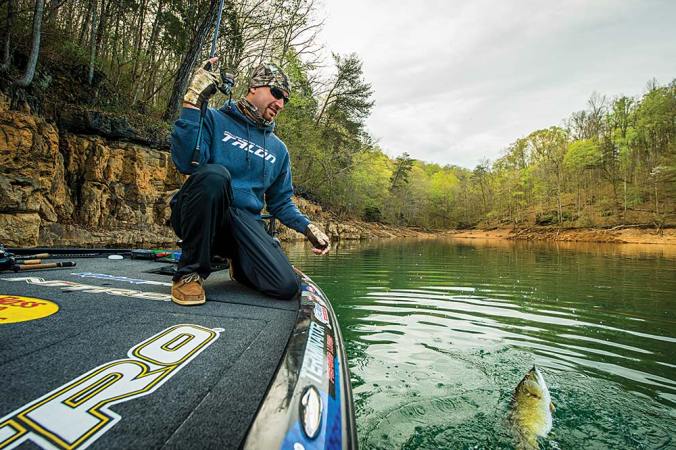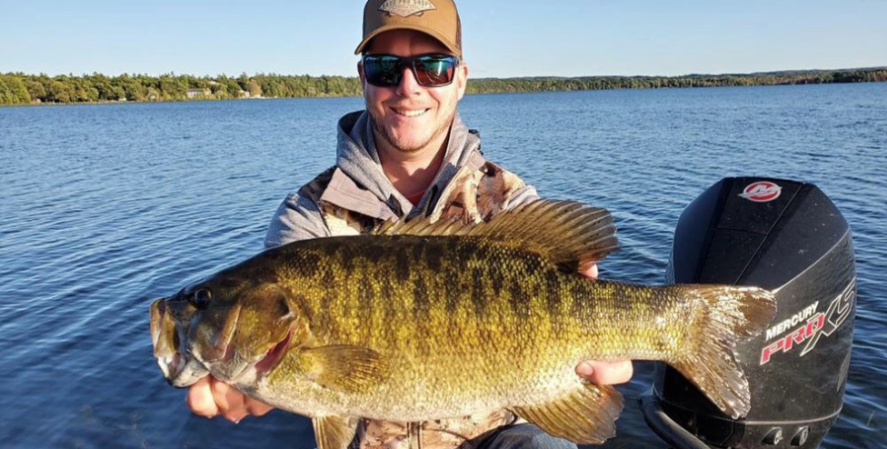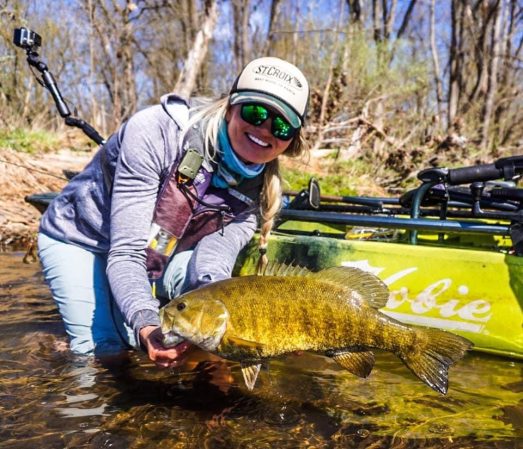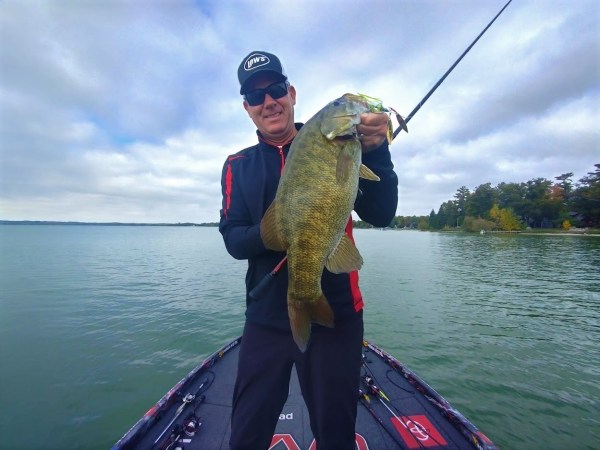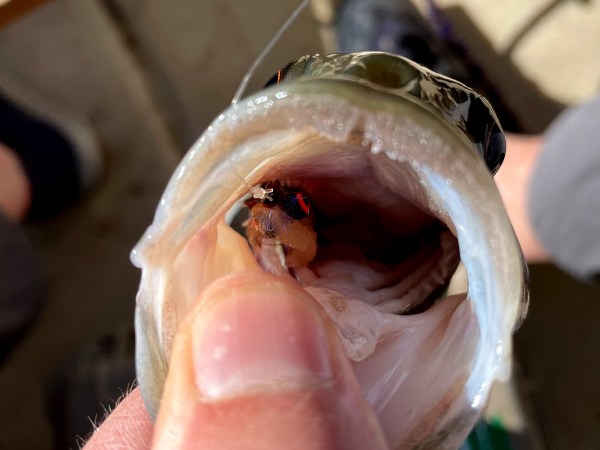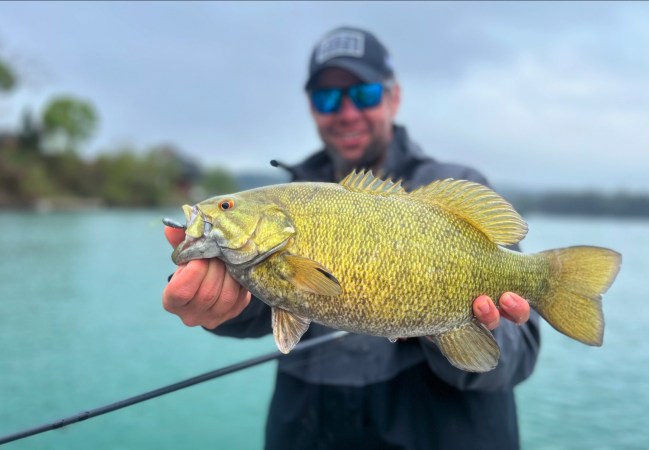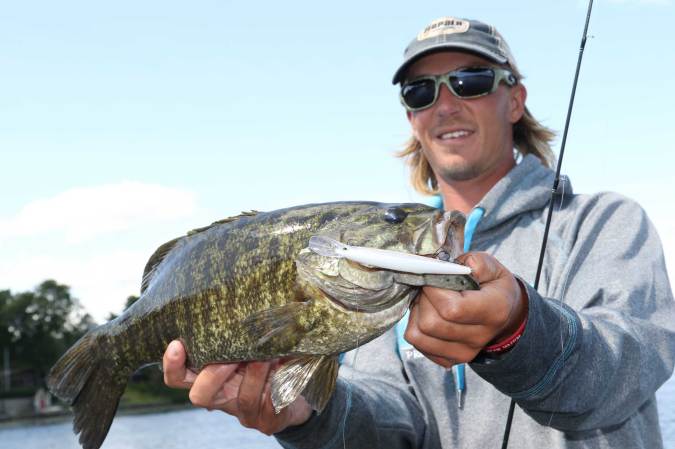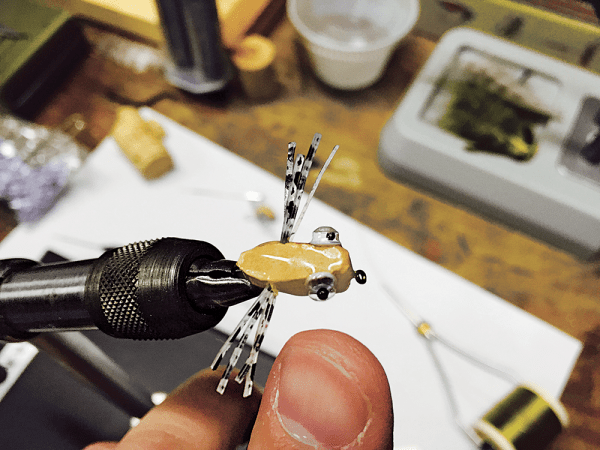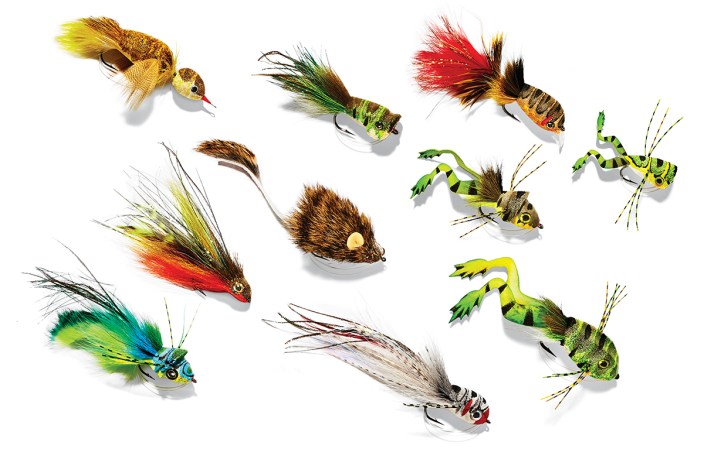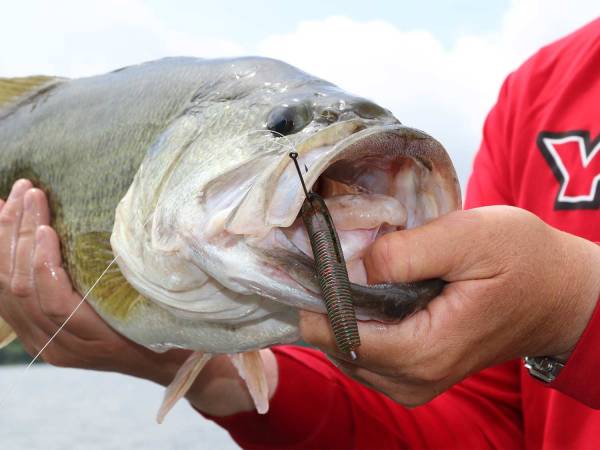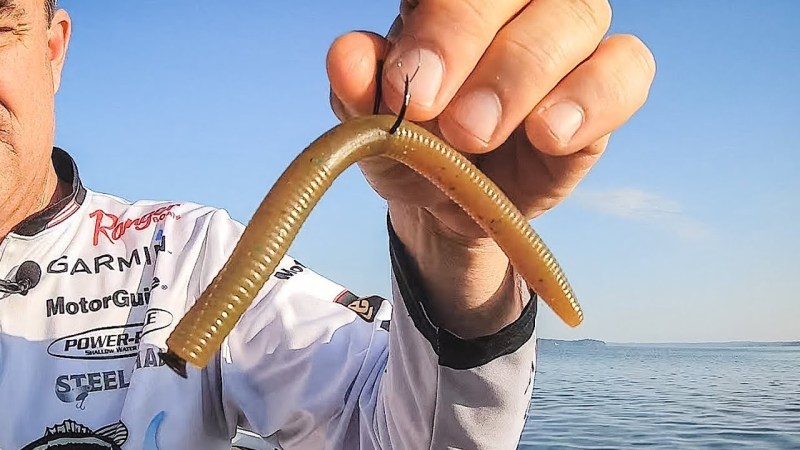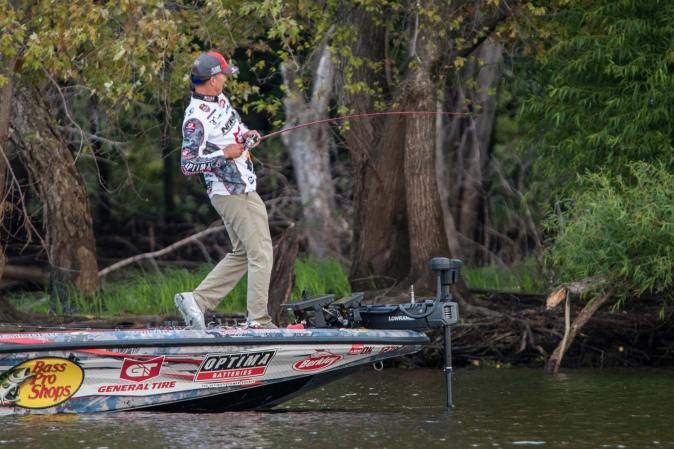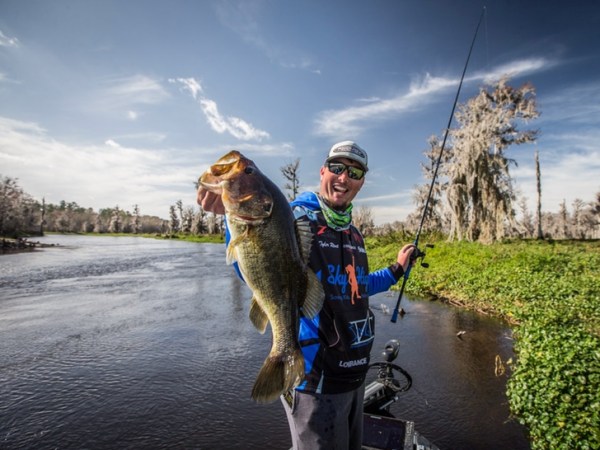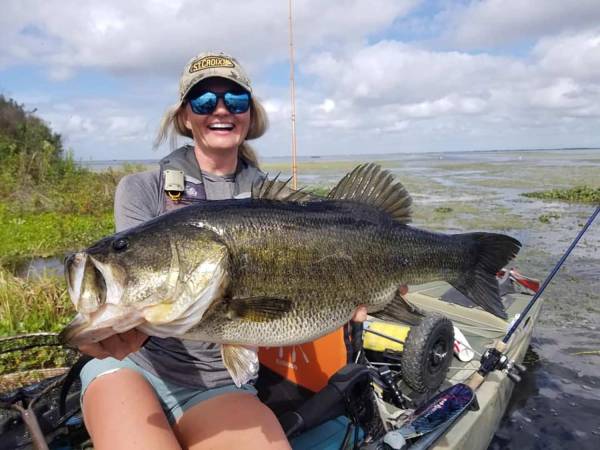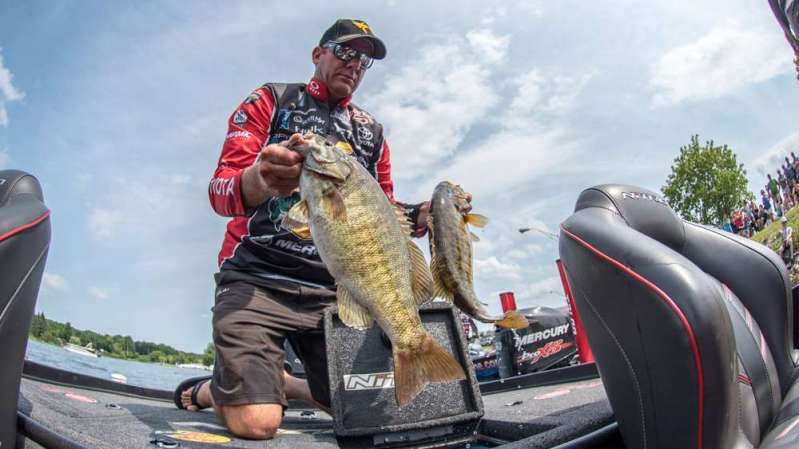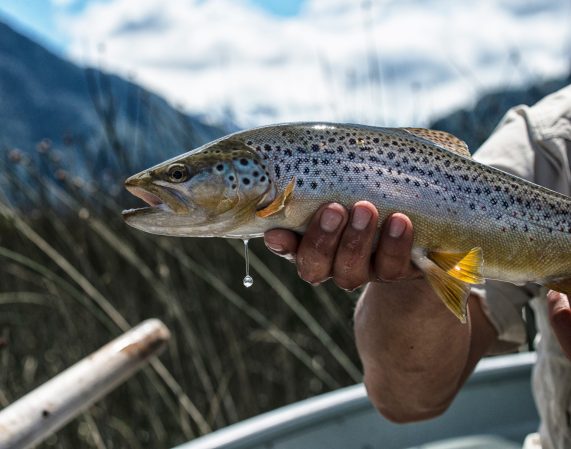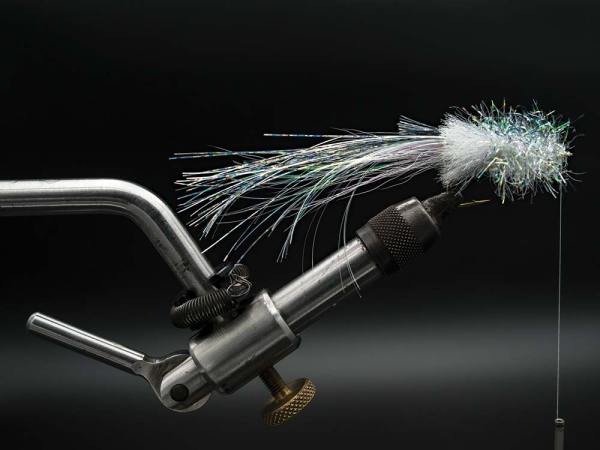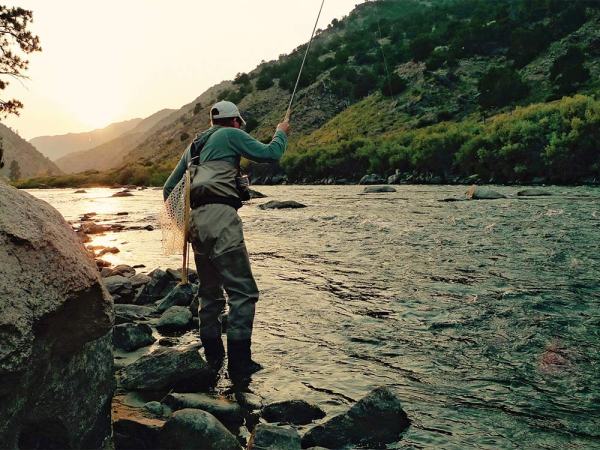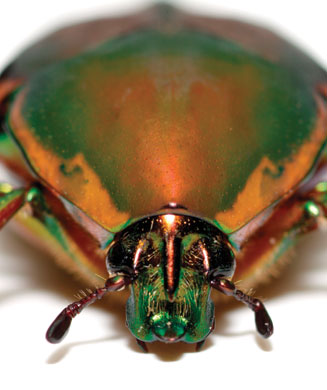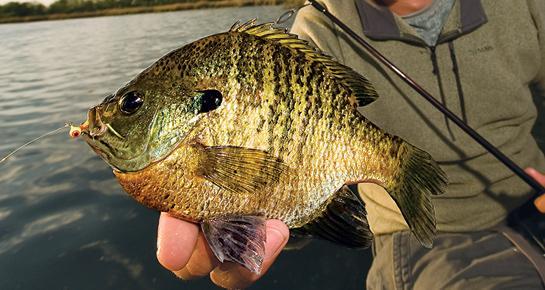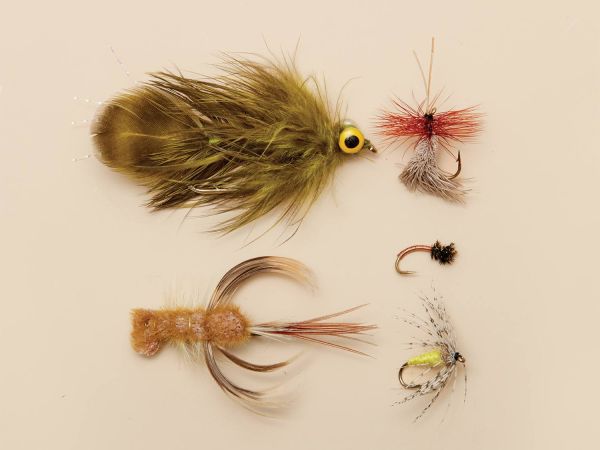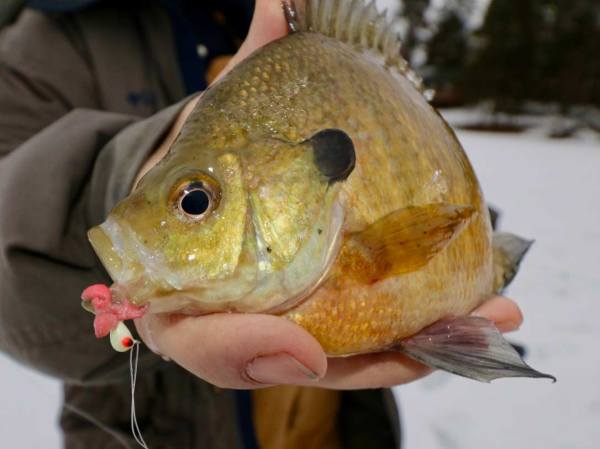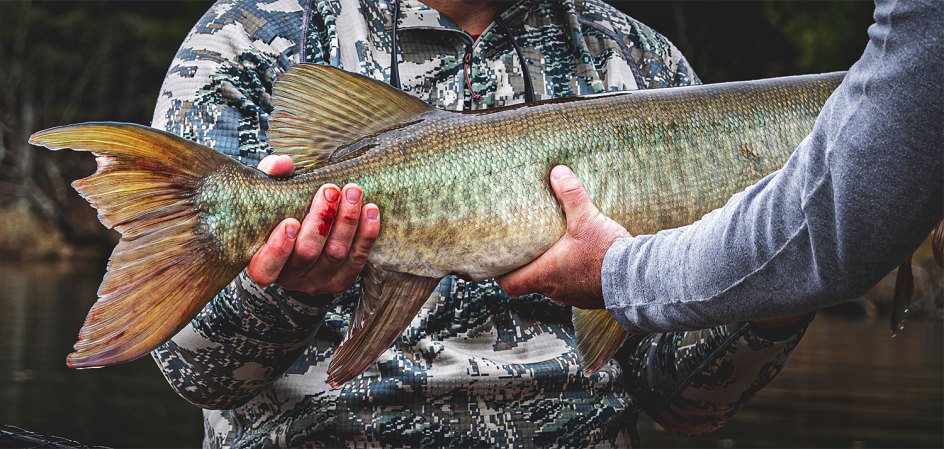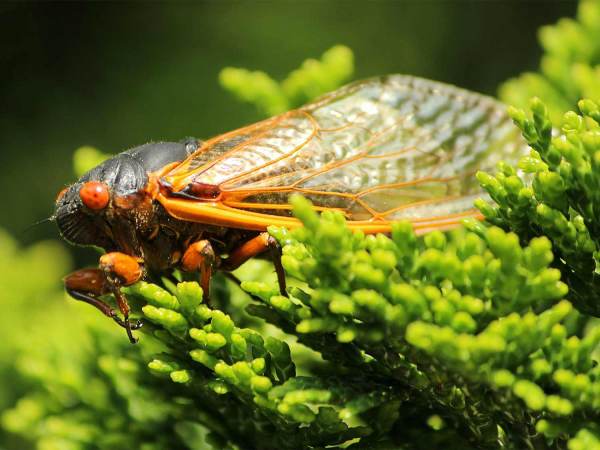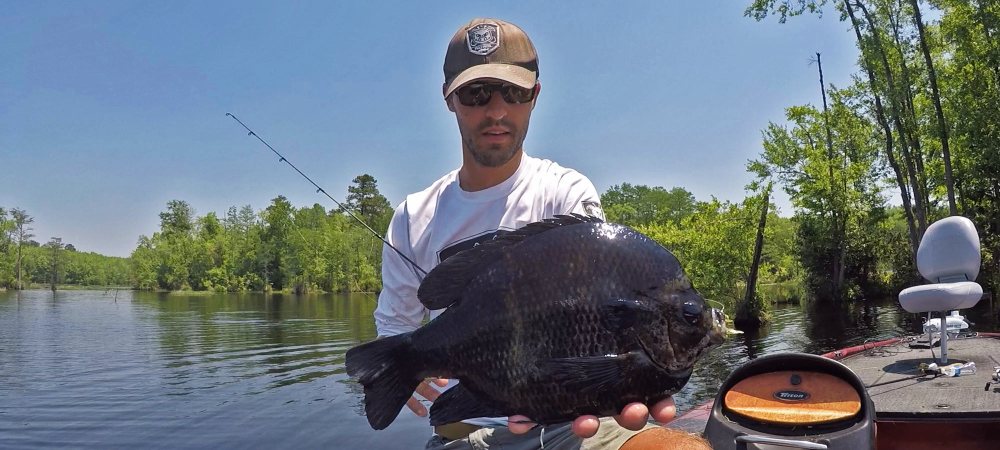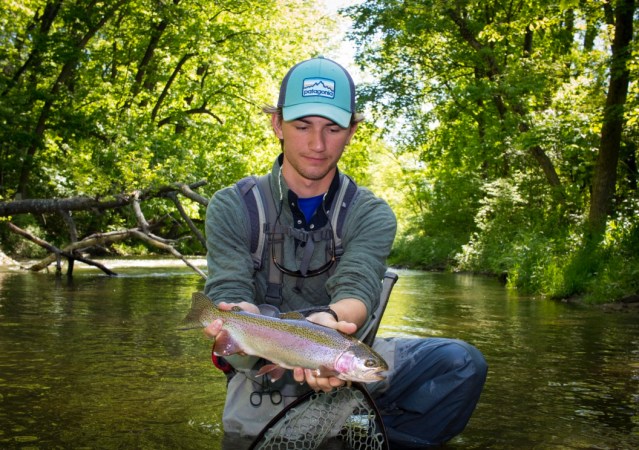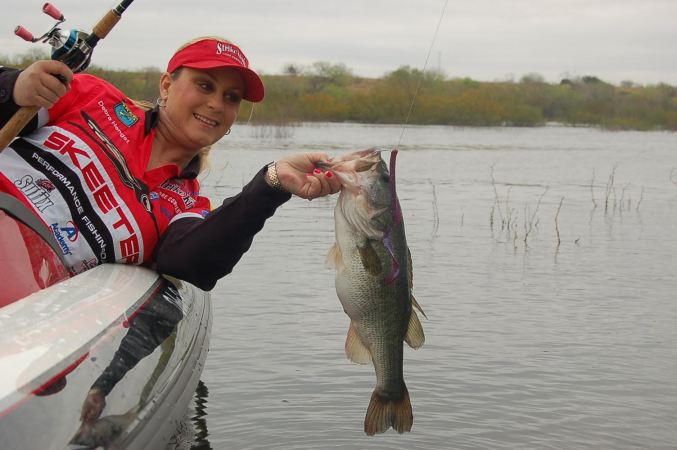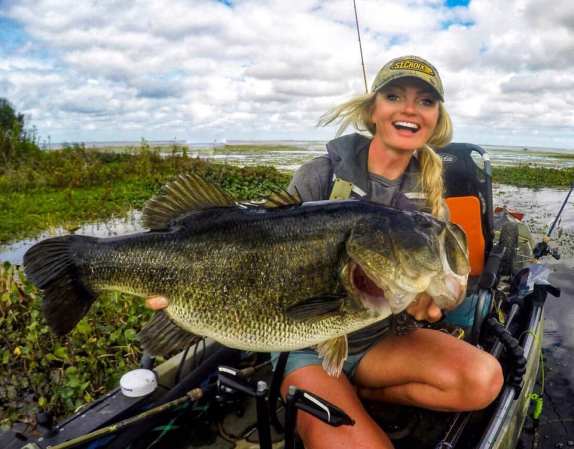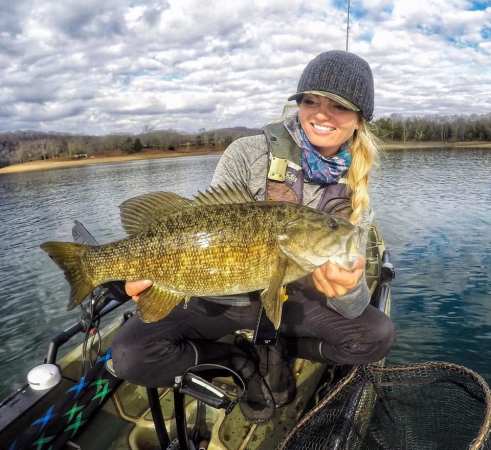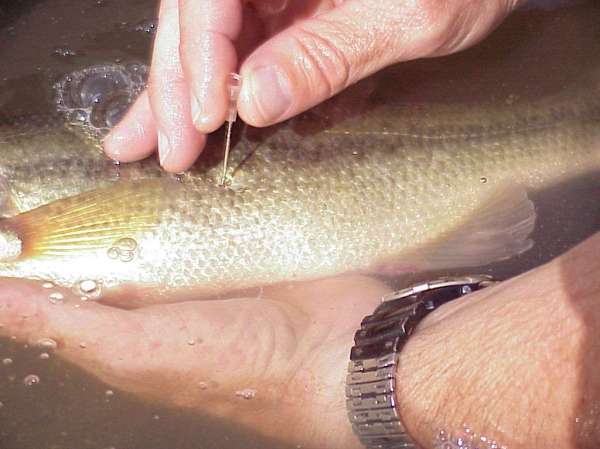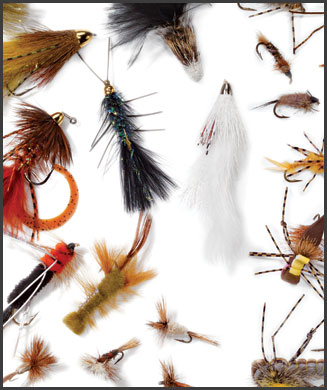To become a better smallmouth angler, start thinking about your flies not as general foodstuffs, but as presentation technologies: Each design allows you to cover water at different depths and speeds, and with different actions and profiles. Below is a list of five different flies that run the gamut in terms of presentation possibilities. A handful of each in a few colors and sizes will have you well on your way to your best bass season ever.
Fly Number 1: Meat Whistle
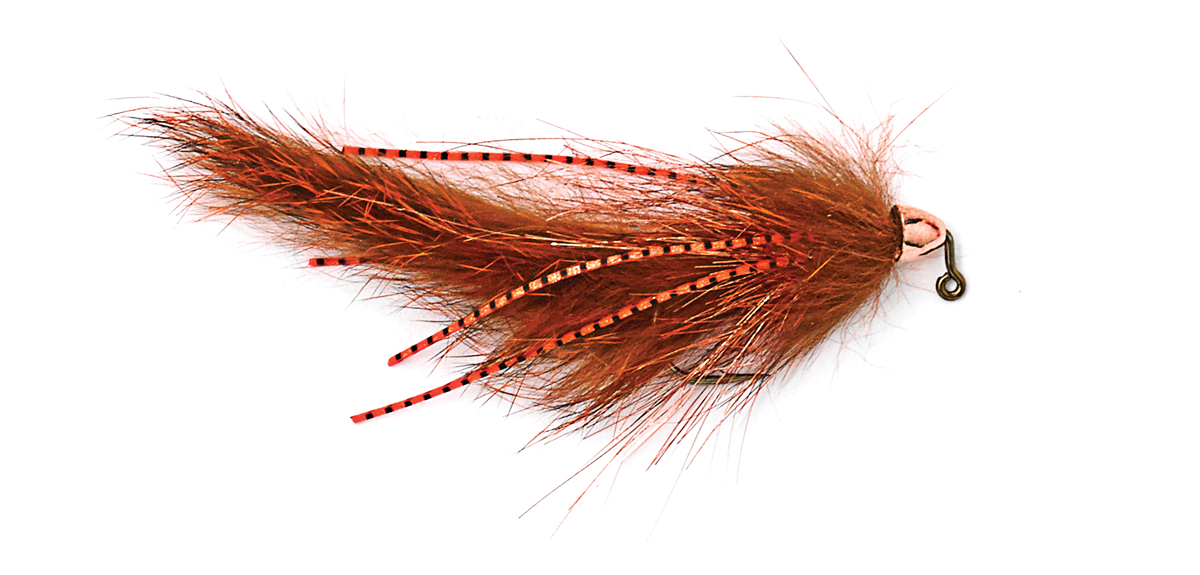
Hook: 90-degree jig hook
Cone: Tungsten
Tail: Rabbit strip
Body: Diamond braid
Legs: Flutter Legs in a contrasting color
Flash: EP Sparkle Brush trimmed to length
Collar: brown marabou or, for even better plummet, rabbit fur in a dubbing loop
The smallmouth season begins and ends with deep water and lethargic fish, which means flies need to get down, stay down, and exude plenty of subtle action. John Barr’s Meat Whistle is just what early-season anglers need. Fish this fly in a river with a floating line and straight mono leader of 7 to 12 feet, depending on your target depth (a 1-foot butt section of 20-pound mono is your only transition between leader and fly line).
Dredging is best practiced from a boat moving roughly the same speed as the current. Simply cast your fly, put a slight downstream belly in the fly line, and add occasional bumps to entice fish into striking.
Fly Number 2: Flash Monkey
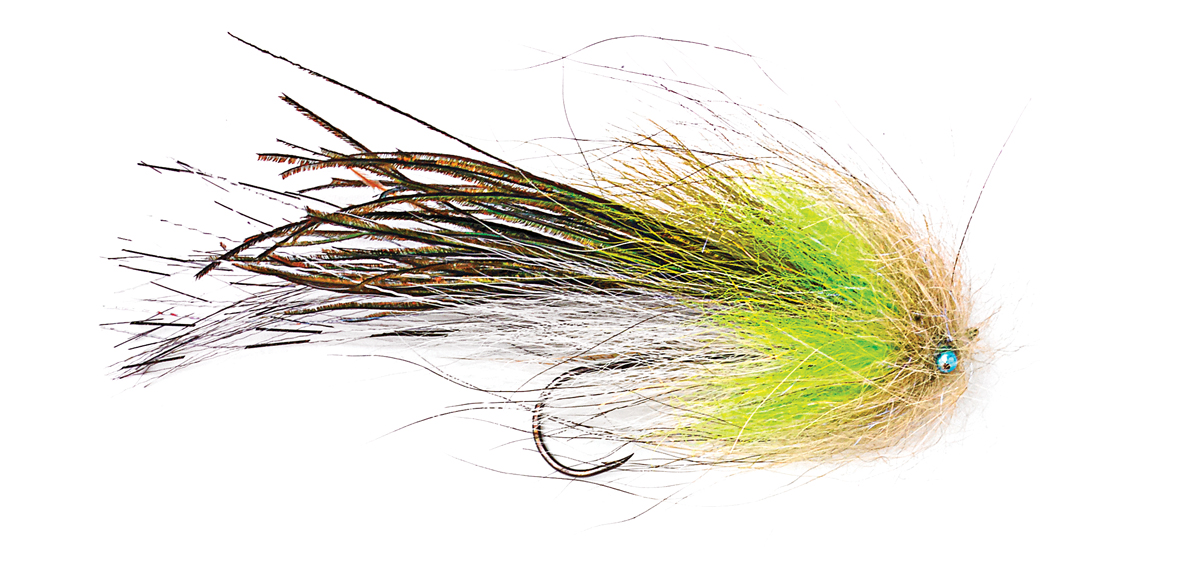
Shank: 25mm Articulated Shank
Connection to hook: Berkley Steelon 30lb nylon coated wire
Hook: VMC WK Wacky Hook
Tail: Krinkle Mirror Flash
Body: Bucktail
Wing: Strung peacock herl
Eyes: Senyodelic Bead Chain Eyes
Head: EP Senyo Chromatic Brush (3 inch size)
When water temperatures climb and bass start intercepting dredgers before they reach bottom, it’s time to switch to a more aggressive approach. Enter the Flash Monkey, the latest fly from Russ Maddin, inventor of the Circus Peanut (which I rank just behind the lightbulb on my all-time-great-ideas list). On most flies, flash plays the role of accessory. But in the Flash Monkey, it’s the main event—all the other materials serve to frame and support the flash. Fish it with an intermediate line for shallow rivers and a sinking line for big rivers and lakes. The Flash Monkey’s profile and undulating materials make this a great swing fly.
Fly Number 3: Boogle Bug
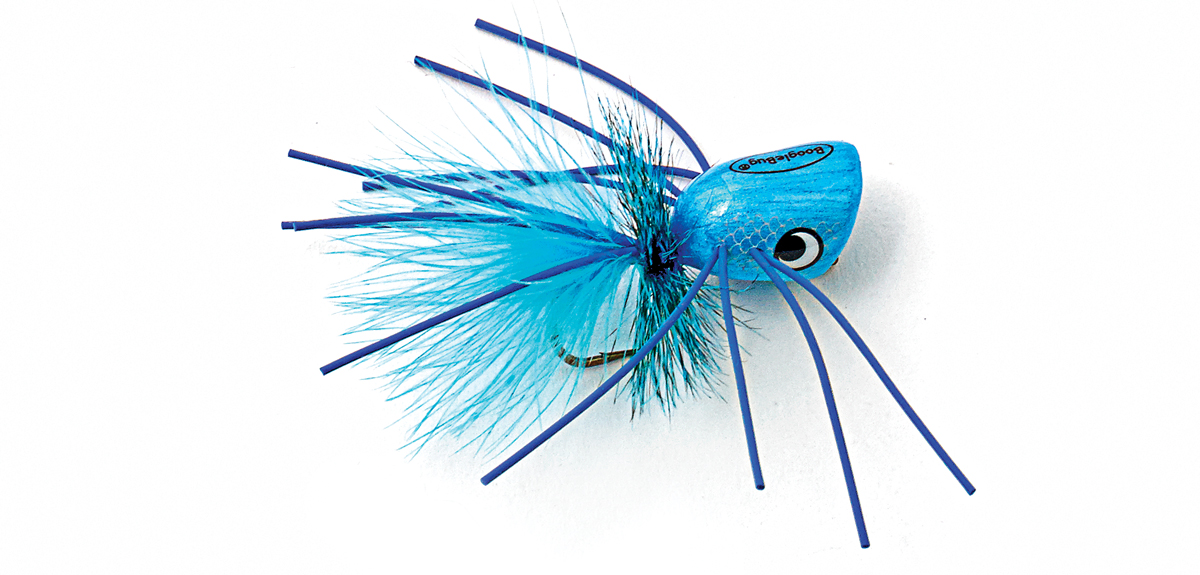
Take a break and buy these from your favorite fly shop. Spend the time you saved at the vise on the water. Repeat as necessary.
Forget the June solstice—summer starts when smallmouths start looking up. In the crowded pantheon of smallmouth surface bugs, the Boogle Bug is the undisputed king. When it comes to presentation, two factors should dictate the power of your pop. The first is water depth: Deep water needs a big pop, shallow water needs a little pop, and ultra-skinny late-summer water needs no pop at all. Manipulate the fly just enough to bend its legs. This subtle yet deliberate action is one you’ll have to practice a bit to get just right, but master the art of the wiggle and you’ll be one step closer to topwater Jedi status on smallmouth bass.
Fly Number 4: Tequeely
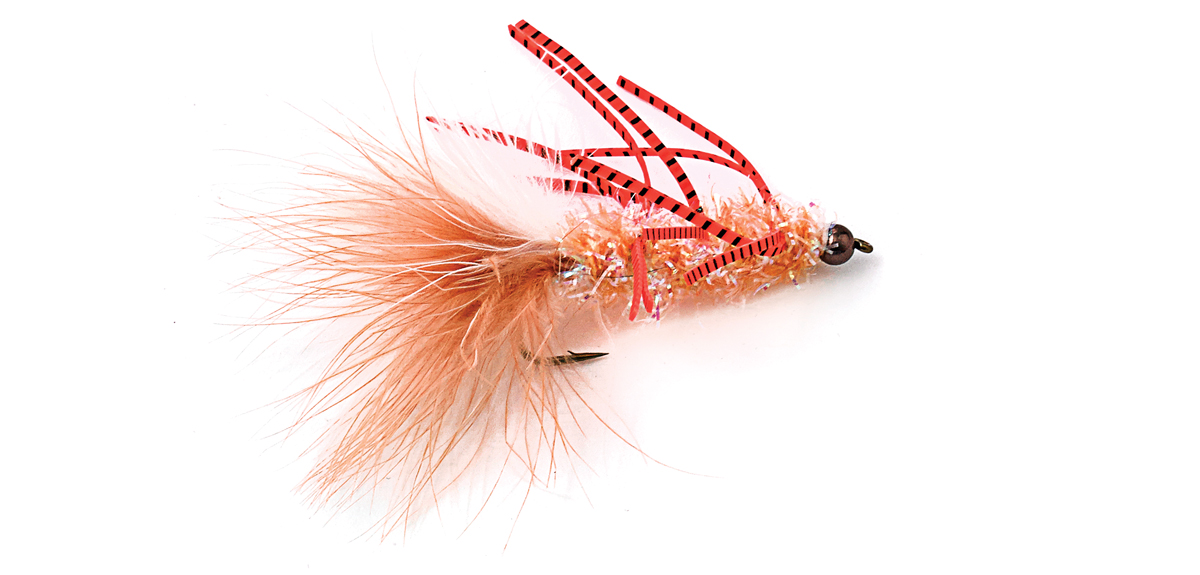
Hook: 3x or 4x long streamer hook
Bead: brass, gold or copper
Tail: three stacked marabou plumes roughly the length of the hook shank
Body: 2-3 stands of Cactus Chenille or Estaz in contrasting colors, twisted to form a rope and then palmered along the hook shank
Legs: Magnum Predator Legs
There are some smallmouth days when you can do no wrong, but that’s rarely the case. Bite doors are as real as bite windows, and the last two flies on our list represent two very different ways of picking the lock.
The ultra-buggy Teqeely exemplifies the less-is-more category. Everything about the design—from its tripled-up marabou tail to its sprawling rubber arms—says, “Just lay me in the water and let me do my thing.” If you’re a river angler, challenge yourself to fish the Teqeely for as long as possible by stripping it, but also consider using exaggerated mends. Waft it over sunken timber or float it down riprap banks.
Fly Number 5: Swingin’ D
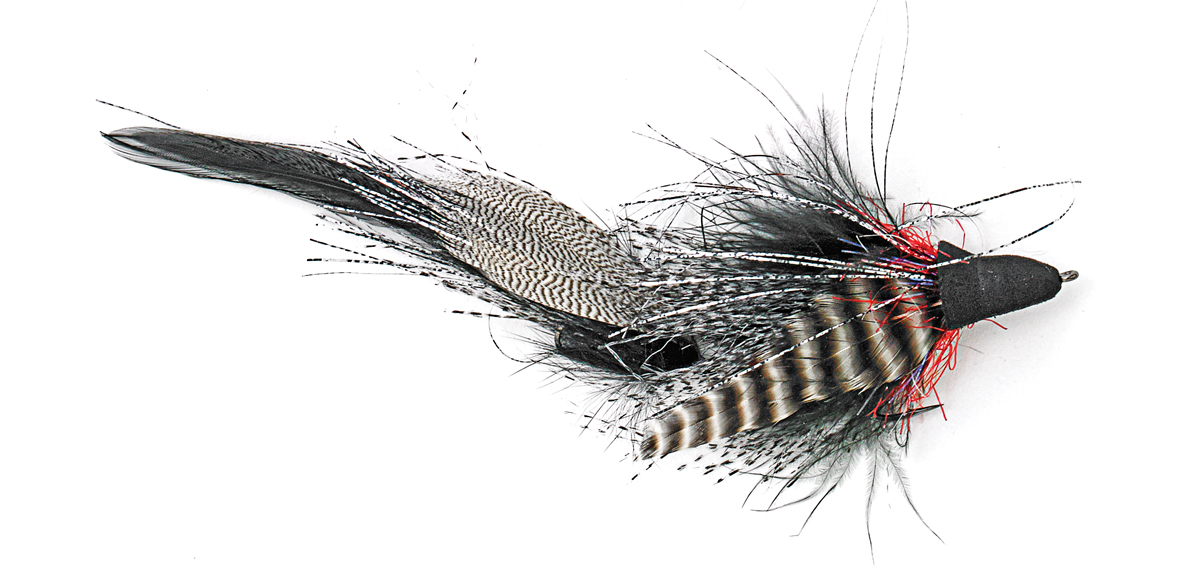
Rear hook: Gamakatsu B-10S
Tail: 2 saddle hackles with flash of choice
Rear body: Senyo’s Predator Wrap trimmed to length, followed by cross-cut rabbit in a dubbing loop
Rear wing: Mallard flank
Connection: 40lb Rio Bite Wire with three 6mm plastic beads
Front body 1: Flash of choice to cover wire connection, followed by 2 turns of rabbit strip (this time leave it on the hide)
Bead: Large glass 5mm
Front body 2: Senyo’s Predator Wrap trimmed to length and palmered over the rattle
Collar 1: 2-3 wraps of marabou tied in at the tip
Overwing: more flash
Side wings: grizzly hackle tips
Collar 2: UV Polar Chenille
Head: Rainy’s Foam Diver Head in small or medium, secured with a gel-viscosity superglue
Minimalism not working? Subtlety not your style? There’s one another way to deal with a bite door, and that’s by kicking it in. The Swingin’ D, the sole articulated fly on this list, was developed by Michigan guide Mike Schultz to swoon, spasm, and swerve. On rivers, I like to fish this fly on an intermediate line and 3 to 5 feet of leader, which allows me to swim the fly close to cover without getting hung up. Simply pause your retrieve and that foam head will float up and away from any obstacle. Still-water anglers should take advantage of a full sinking line to count the fly down to any part of the water column. Be sure and alternate between slow and sharp motions.
Photographs from top: David Karczynski; Cliff Gardner and John Keller (5)
Fly recipes by Gerry Bethge
